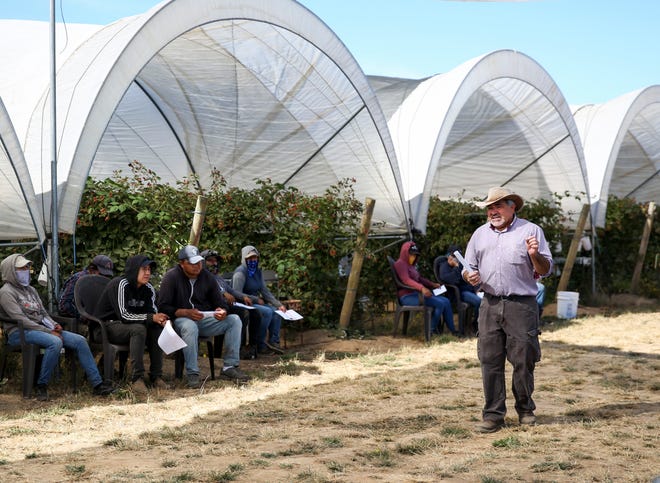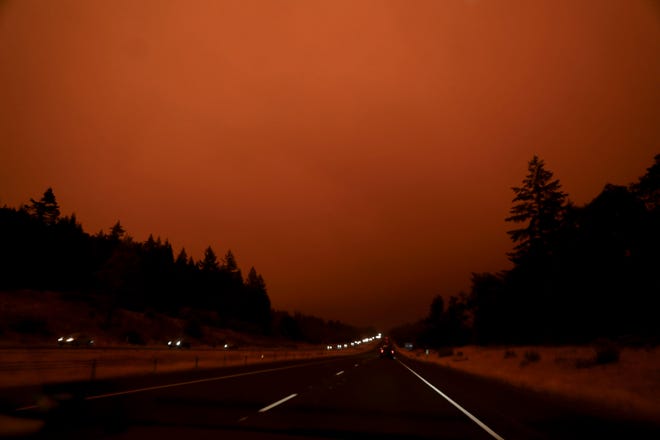Judge dismisses lawsuit challenging Oregon’s new heat and wildfire smoke rules
Salem Statesman Journal

A federal magistrate Tuesday dismissed a lawsuit against Oregon OSHA that claimed the state agency’s new heat and smoke rules violated the 14th amendment of the U.S. Constitution and were unenforceable.
In an oral argument to Magistrate Mark D. Clarke, attorneys for Oregon Manufacturers and Commerce, Associated Oregon Loggers, and Oregon Forest and Industries Council contended air quality fluctuates due to a number of factors, not just wildfire smoke.
“Most times, it’s not obvious,” attorney James Anderson said in a December hearing over the phone. “There’s no method to determine that air quality is due to wildfire smoke, or prescribed burn smoke, or other things that make up particulates.”
Clarke was not convinced.
“Why is it that complicated?” Clarke asked Anderson. “[Oregonians] are very familiar with wildfire smoke. I’m not sure any of us have any trouble knowing when wildfire smoke rolls in. I’m having trouble with that, factually.”

The suit claimed OSHA’s permanent rules meant to protect workers against extreme heat and wildfire smoke were too vague to be reasonably enforced and therefore violated employers’ 14th Amendment rights.
The suit was filed June 15, half a month before heat rules took effect and a month before wildfire rules took effect. It requested, among other things, an injunction to prevent the new rules from being enforced. The injunction, however, was not granted.
In the motion to dismiss, lawyers for Oregon OSHA argued sovereign immunity, which gives state agencies immunity in federal court. The agency also claimed the rules are not vague to employers with common sense and “reasonable intelligence.”
“Common sense (and the experience of Oregonians who have lived through recent wildfire seasons) confirms that employers of reasonable intelligence have ample means to make a determination as to whether wildfire smoke is impacting air quality, often through their own observations and senses, as well as access to significant publicly available information regarding the location of wildfires and their zone of impact,” the motion said.
“There can be no serious argument that the wildfire smoke rules are unconstitutionally vague,” the motion continued, because “they allow employers to monitor air quality through a metric developed by the EPA.”
What the rules say
OSHA’s rules apply to anyone who works outside or inside without air conditioning or other ventilation.
The heat rules kick in when the temperature index reaches 80 degrees, at which point employers must provide shade, water and written safety plan that includes a break schedule. When the heat index reaches 90 degrees, employers are required to monitor workers for signs of heat stress and be in regular communication with employees via a buddy system or through cell radio.
Specific rest schedules change the warmer it gets.
The most contested part of the rule is a provision that requires employers to provide heat acclimatization plans that allow workers to adjust to extreme heat. It also was the most commonly-violated element of the heat rule, according to Oregon OSHA.
The wildfire smoke rule requires employers to provide a National Institute for Occupational Safety and Health (NOISH)-approved respirator (like an N95) to all employees once the air quality index reaches 101. Employees do not have to wear masks or respirators until the AQU reaches 251.
How well did new rules work? Heat and wildfire smoke rules in Oregon yield some citations, many OSHA complaints
Like the heat rule, the smoke rule also requires employers to train employees on safety and monitor for effects of smoke exposure.
The heat rule was enforced at various worksites since their implementation. Oregon OSHA received more than 200 heat-related complaints by September. Ten complaints resulted in citations.
Oregon OSHA received 13 complaints about the smoke rule. None resulted in citations.

How the judge ruled
In his 20-page ruling and opinion dismissing the case, Clarke said Oregon OSHA has sovereign immunity as a state agency and that neither the heat nor smoke rule is unconstitutionally vague.
Since penalties for violating each rule are civil and not criminal, plaintiff attorneys had to prove that the rules are vague in all circumstances. They did not make such allegations, “nor could this be feasibly alleged,” Clarke ruled.
“While there may be days and times when the smoke in the air is less detectable to the average person’s senses, the smoke rules give a variety of ways in which the employer may reasonably determine whether the PM2.5 is high enough to enact the protections,” Clarke wrote.
“Similarly, while there may be challenges in rolling out the acclimatization protocols day by day, as temperatures rise and drop, Plaintiffs can clearly determine whether the ambient heat is over 80 degrees Fahrenheit.”
The case was dismissed with prejudice, which means it cannot filed again.